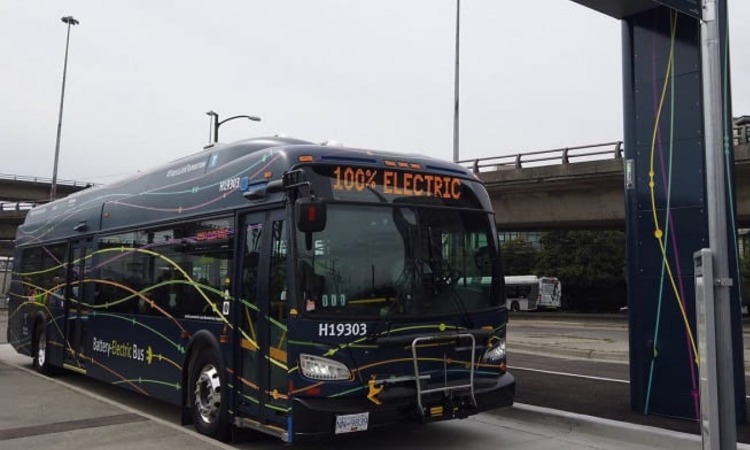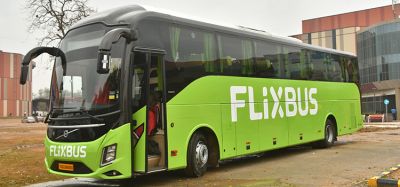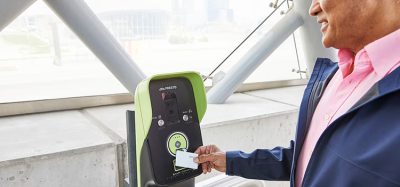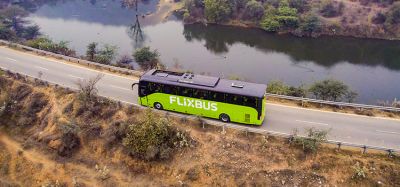TransLink’s new Climate Action Strategy maps path to net zero
- Like
- Digg
- Del
- Tumblr
- VKontakte
- Buffer
- Love This
- Odnoklassniki
- Meneame
- Blogger
- Amazon
- Yahoo Mail
- Gmail
- AOL
- Newsvine
- HackerNews
- Evernote
- MySpace
- Mail.ru
- Viadeo
- Line
- Comments
- Yummly
- SMS
- Viber
- Telegram
- Subscribe
- Skype
- Facebook Messenger
- Kakao
- LiveJournal
- Yammer
- Edgar
- Fintel
- Mix
- Instapaper
- Copy Link
Posted: 31 January 2022 | Intelligent Transport | No comments yet
As part of its commitment to operate sustainable transport services, TransLink has released a new Climate Action Strategy with ambitious goals for the company, including a fully zero-emission bus fleet by 2040.


Credit: TransLink
Vancouver-based operator TransLink has announced the release of its Climate Action Strategy, which maps an aggressive path to zero greenhouse gas emissions (GHGs). This strategy provides new emission reduction targets for all TransLink operations, fleets and facilities. It also identifies opportunities to create a more climate resilient transit system that better withstands the effects of climate change on infrastructure, as well as providing customer safety and comfort during extreme weather.
Furthermore, this strategy applies to TransLink’s entire fleet of more than 2,000 transit vehicles, over 400 service vehicles and its operations at over 200 facilities such as stations, terminals, transit hubs, park n’ rides, transit centres, maintenance centres and administrative offices.
The Climate Action Strategy sets new ambitious goals for TransLink and its operating companies, including a 45 per cent reduction of GHGs by 2030 (over 2010 levels), zero emissions from its bus fleet by 2040 and net zero GHGs by 2050. The plan also aims to create a more resilient system that can better withstand climate impacts, which also keeps customers safe and comfortable in extreme weather.
Road-based transportation – including personal, commercial, industrial and public transit vehicles – represent the largest single source of GHGs in the region, accounting for 35 per cent of all emissions. While TransLink’s GHGs account for only 2.7 per cent of those emissions, it recognises the need to accelerate action to ensure that its transit system has no negative contribution to the changing climate.
“The climate emergency is one of the most difficult challenges in human history, and we are seeing the devastating impacts of extreme weather in our region first-hand,” said Kevin Quinn, TransLink‘s CEO. “With an all-electric SkyTrain system, a large fleet of electric trolleybuses and a growing fleet of battery-electric buses, transit is already one of the most sustainable ways to travel in Metro Vancouver. That said, businesses and individuals have a collective responsibility to do everything that we can to address the climate emergency. This strategy will eliminate our carbon footprint and lead to a cleaner and greener future for generations.”
This strategy will help TransLink to meet or exceed recommendations from the United Nations’ (UN) International Panel on Climate Change (IPCC), Metro Vancouver’s current regional targets, targets set by the federal government and provincial targets outlined in CleanBC.
TransLink’s next steps include releasing a Climate Action Plan – projected to be released in late 2022 – which will contain specific details on how it will achieve the goals set out in the Climate Action Strategy. This plan will also complement Transport 2050.
Other key objectives in the Climate Action Strategy include:
- Over 400 new battery-electric buses in service by 2030
- The first zero-emission fully electric SeaBus in service by 2030
- Equipping 100 per cent of its bus fleet with air conditioning by 2028
- Building and operating a new transit centre in the Marpole area of Vancouver that will house over 300 battery-electric buses by 2027
- Using only renewable natural gas in its compressed natural gas fleet by 2024.
Related topics
Air Quality, Alternative Power, Passenger Experience, Public Transport, Sustainable Urban Transport
Related modes
Bus & Coach
Related cities
Vancouver
Related countries
Canada
Related organisations
Translink
Related people
Kevin Quinn








